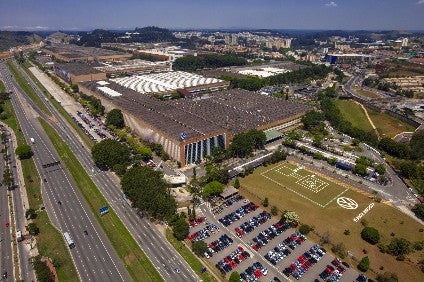
With the confusing Inovar-Auto (Innovate-Auto) programme due to end on 31 December 2017, the government has decided to impose a new, longer term directive for the Brazilian automotive industry.
Marcos Pereira, minister of industry, foreign trade and services, has confirmed the proposed new automotive regime – Rota 2030 (Route 2030) – will change the current excise tax policy based on engine displacement and fuel type. The word so far is that the new programme will favour energy efficiency and sustainability.

Discover B2B Marketing That Performs
Combine business intelligence and editorial excellence to reach engaged professionals across 36 leading media platforms.
Rota 2030 is under discussion by both the government and private enterprise (automakers and auto parts associations) and at BNDES bank. A draft of the plan is expected by late May. From September the programme’s legislative and legal requirement would start to be drafted.
Despite problems with Inovar-Auto, Pereira said the current regime had proved its value by turning Brazil into a developer, and even exporter, of some automotive technology.
“I think we can learn good things from Inovar-Auto. We had over 100 innovations. Without the incentives to research we would not have developed them,” he said.
Investment in research and development totalled BRL13bn/US$4bn during the five years of the current plan, according to industry sources.
Issues under discussion include supplier base recovery, localising technology, research, development, engineering, energetic efficiency (to consider 100% ethanol characteristics as a clean fuel), vehicle safety, vehicle technical inspection, resolving logistic lock-ups, labour relations and tax.
Six working groups have been formed to deal with each theme.
According to Antônio Megale, president of Anfavea (the Brazilian automakers’ national association), “mobility is changing rapidly in the whole world and consumers, ever more demanding, are eager for new technologies, safety improvement, better fuel mileage and emissions reduction. With Inovar-Auto ending and the lessons learned from it, we have a unique opportunity to develop a new, long-term, automotive regime focused one these changes and to strengthen the productiion chain as whole in order to be able to compete in the global market”.
The automotive chain is one of the longest in Brazilian industry. It accounts for 22% of industrial GDP and 4% of gross GDP. It employs directly and indirectly 1.6m people and pays direct taxes of BRL40bn/$13bn on vehicles yearly.
It boosts the country’s economy with income from employment at raw material producers, automakers and auto parts makers and the distribution network, supported by services such as fuel stations, tyre repair shops, mechanical service shops, sales networks and insurance.
There will, howver, be specific concerns related to the four ‘newcomer’ automakers (Audi, BMW, Jaguar Land Rover and Mercedes-Benz) who invested in Brazilian assembly plants under rules and incentives granted by Inovar-Auto that will no longer exist in 2018.
These makes have built smaller factories – maximum capacity 32,000 units yearly – and they now have to work out how to sustain their operations. They are assemblers of KD kits imported from parent companies with local body welding, painting and assembly, with some local parts content, rather than full manufacturers.
The most likely solution for these automakers is a special regime with transitory rules until the Brazilian market eventually recovers.






